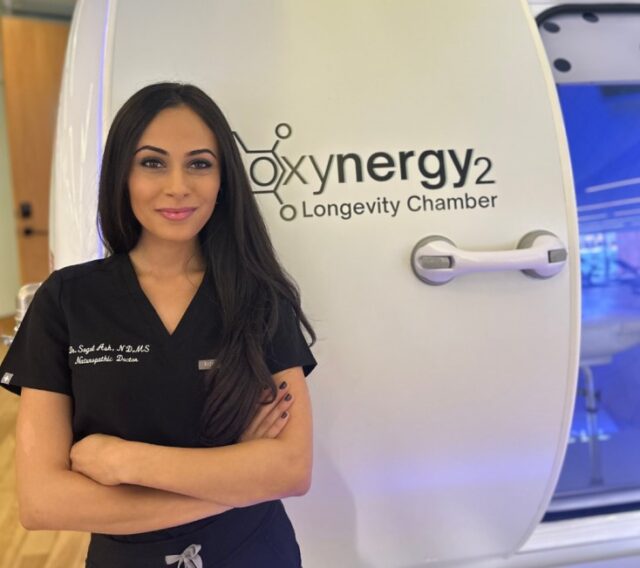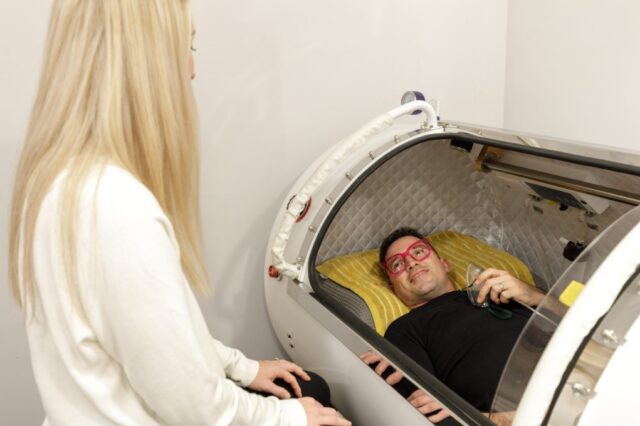
Hyperbaric Oxygen Therapy (HBOT) has emerged as a compelling treatment modality that leverages the physiological benefits of inhaling 100% oxygen in a pressurized environment. This innovative therapeutic approach has shown promise in managing a spectrum of medical conditions, from chronic wounds to complex neurological disorders.
As with any medical treatment, personalization is key, and determining the right frequency of HBOT sessions is crucial for maximizing therapeutic outcomes. This article delves into the nuances of HBOT, emphasizing how to tailor the treatment frequency to individual needs.
Understanding Hyperbaric Oxygen Therapy
At its core, HBOT involves breathing pure oxygen in a specially designed chamber where atmospheric pressure is increased to levels higher than what we experience at sea level. This heightened pressure allows the body to absorb more oxygen than would be possible under normal conditions. The dissolved oxygen in the bloodstream reaches areas with compromised blood flow, fostering healing and regenerative processes at the cellular level.
The physiological underpinnings of HBOT are grounded in its ability to enhance oxygen delivery to tissues, reduce inflammation, and stimulate angiogenesis—the formation of new blood vessels. These mechanisms collectively contribute to the healing of damaged tissues and organs, making HBOT a versatile tool in the medical arsenal.
Tailoring HBOT Frequency to Individual Needs
Determining the optimal frequency of HBOT sessions is more art than science, necessitating careful consideration of various factors, including the nature and severity of the condition being treated, individual patient responses, and the specific goals of therapy.
To achieve the best outcomes, it’s crucial to collaborate with experienced professionals in hyperbaric therapy, such as those found in hyperbaric therapy Los Angeles centers, who can provide personalized care plans. These experts can help in adjusting the treatment frequency to match the unique health profiles and recovery timelines of their patients, ensuring that each individual receives the most beneficial level of intervention.
Condition Severity and Type

The nature of the medical condition plays a pivotal role in dictating the HBOT schedule. Acute conditions, such as carbon monoxide poisoning or decompression sickness, often require intensive, short-term treatment protocols, possibly involving multiple sessions per day.
Conversely, chronic conditions like diabetic foot ulcers or radiation injury may benefit from a more prolonged treatment course, with sessions spread out over weeks or months.
Individual Patient Responses
Just as each patient’s condition is unique, so too is their response to HBOT. Some individuals may experience significant improvements relatively quickly, while others may require more time to respond to the therapy.
Regular assessment and monitoring are essential to gauge the therapy’s effectiveness and adjust the frequency accordingly. It’s not uncommon for the treatment plan to evolve based on the patient’s progress and tolerance to the therapy.
Therapeutic Goals
The objectives of HBOT also influence the frequency of sessions. For wound healing, the focus might be on sustained oxygen delivery to the affected area over time, necessitating a consistent, albeit less intensive, treatment schedule.
In contrast, for acute neurologic conditions, a more aggressive approach might be warranted to capitalize on the time-sensitive window for neuroprotection and recovery.

Conclusion
Hyperbaric Oxygen Therapy represents a potent tool in the therapeutic landscape, with its efficacy hinging on a personalized approach to treatment frequency. Balancing the variables of condition severity, patient response, and therapeutic goals is essential for harnessing the full potential of HBOT.
As research in this field advances, so too will our understanding of how to best tailor this unique therapy to meet the diverse needs of patients, offering new horizons in medical treatment and healing.







